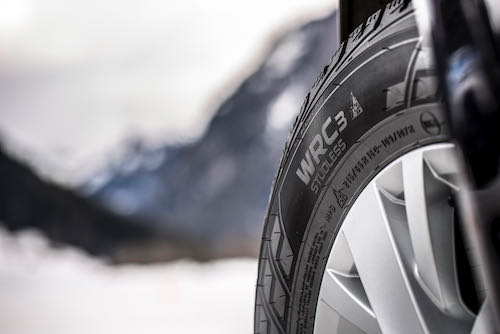As strange as it might sound, the all-season tires are actually harder than winter tires are room temperature. The all-season tires have to be soft and agile during the warm season, but not get too soft during the very hot summer temperatures. The winter tires or snow tires as they are also often referred to as, have to be soft and agile even at very low temperatures. The winter tires will therefore be very soft at room temperatures and also during summer temperatures, which is why they shouldn’t be used. The increased friction heat in the tires can quickly wear down the tires.
It is a fact that winter tires will outperform all-season tires when the temperature drops below 45°F as the all-season tires will become too hard and will lose its ability to create sufficient friction when they are hard. This is why you need to use winter tires during the winter even if there is no snow or ice present. This is why it is important to do timely changes, as the rubber compound will not perform optimally otherwise and thus not allowing the tires to give their best performance. So regardless of weather conditions, you have tires that will perform better. If you then add that the tread design also has been optimized for the weather conditions, you can easily understand the disadvantage that you put yourself in if you don’t do the change.
All-season tires are optimized for dry tarmac roads during temperatures above 45°F all the way up to the hottest summer days. They are also optimized to handle rain, as the summer rain can be quite heavy, and you can easily get a lot of water amassed on the streets. The tires with its tread design have to be able to push all that water to the sides or store the water in the tread to ensure that the tire remains in contact with the road surface. If the tires are close to being worn out the tread depth is lower, and they can’t store the same volume of water on the tread, and you can also channel less water to the sides. This increases the risk for aquaplaning, which can be very dangerous and cause accidents.
For winter tires the tread is optimized to handle snow, ice and slush. The tread will have some way to create grip on ice, which can be done by added metallic studs or then by using gripping particles. Both are able to create good grip in winter conditions. This is what is referred to as studded or non-studded tires. The winter tires will also use the tread to create traction when you drive on snow and to handle slush, which is snow and water mixture. Slush can cause slushplaning in the same way that water can cause aquaplaning. The tires have to be able to push the heavy slush to the sides to ensure that the tires can remain in contact.
For more information regarding all-season tires for the warm season, visit: https://www.nokiantires.com
